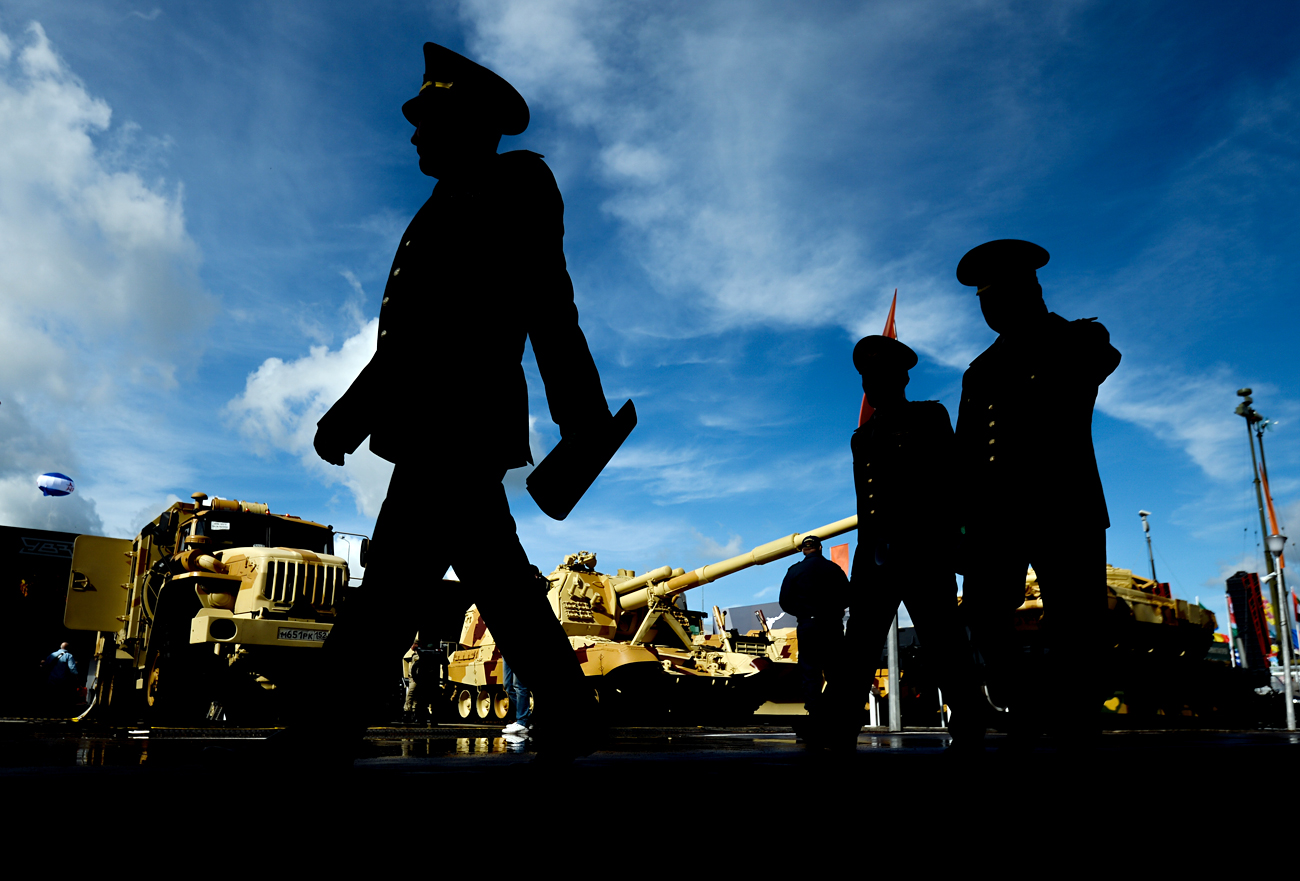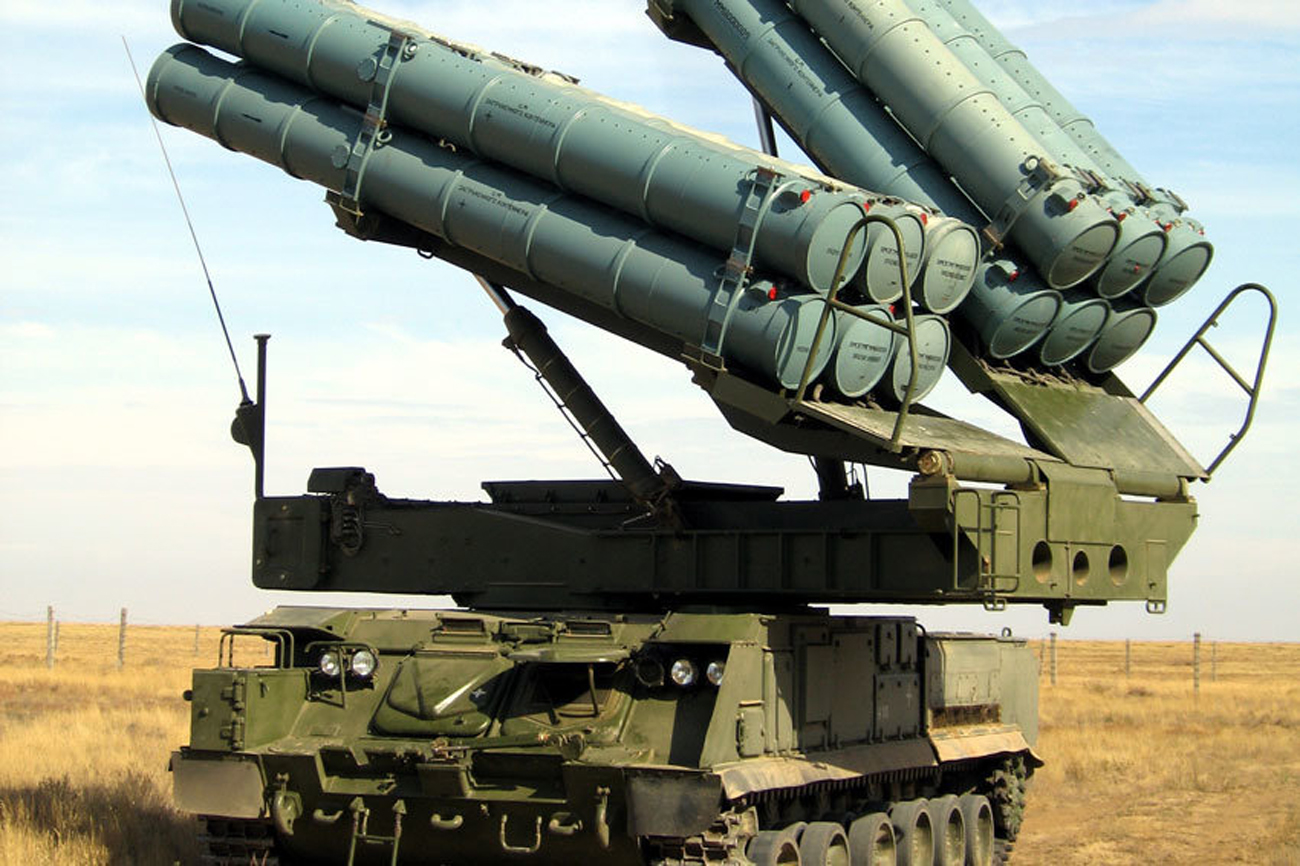Russia slashes military spending as revenues shrink

In 2018 defense spending will amount to 3 percent of GDP, while in 2019 it will drop to 2.8 percent.
Alexey Filippov/RIA NovostiAs the economy continues to struggle under the weight of low oil prices and sanctions, Russian authorities have decided to cut defense spending by 1,000 billion rubles ($15.89 billion), or by approximately 30 percent.
The figures became clear from the draft federal budget that the government submitted to the State Duma at the end of October, business daily Kommersant reports.
Overall, spending on national defense in the federal budget for 2017 is envisaged at 2,840 billion rubles ($45.15 billion), or 3.3 percent of GDP.
“When revenues are falling, the task of reaching a compromise between different recipients of the budget pie fades into the background. What matters is to ensure, albeit on a reduced scale, the operation of the national economy and the state in all the key areas,” says Alexei Kalachev, an expert analyst with Moscow investmenrt company Finam.
With oil prices falling, he continues, it would have been strange to continue increasing military spending while welfare spending is reduced. So the share of military spending is gradually falling. For instance, in 2018 defense spending will amount to 3 percent of GDP, while in 2019 it will drop to 2.8 percent.
Lessons from the USSR
The government’s decision to cut the defense budget has largely been driven by the example of the final years of the Soviet Union, which – despite falling oil prices – continued to boost military spending, thus sinking into a deep crisis that ultimately led to the break-up of the country.
“The main lesson in budget planning to be learnt from the budget of the final years of the USSR is the danger of excessive military spending,” says Sergei Khestanov, a macroeconomics adviser to the head of the Otkrytie Broker financial company.
Khestanov believes this is the reason the government has decided to cut defense spending by a third, despite the fact that the reduction will come as a blow to many defense industry enterprises.
It is not only in defense that spending cuts are imminent: Practically all items in the draft budget will be reduced, but it is defense that will see the biggest cuts.
“The only exception is a sharp rise in the 2017 spending on social policy, which has to do with the presidential election cycle: Before elections butter is far more important than guns,” says Alexei Kalachev.
At the same time, starting from 2017, spending on servicing sovereign debt will see a scheduled boost. By that time, the repository of Russia’s oil-generated superprofits, the Reserve Fund, will be fully exhausted from covering the budget deficit, after which the main source of plugging the budget hole will be increased borrowing.
Economical approach
The amount of the budget deficit primarily depends on the oil price: In 2016, the government plans to keep it at 3 percent of GDP.
“At the moment, the draft budget for the next year is based on quite conservative estimates as regards the oil price, which necessitates a considerable reduction in spending,” explains Mikhail Poddubsky, an analyst with Russian financial services company ТeleTrade. Furthermore, he predicts, it is likely that in future spending will have to be cut even further.
Given the shortage of public funds, the government has already given up plans to launch several new major projects. Among other things, it has even reduced the funding allocated for the revamp of the country’s main railway lines linking Europe and the Far East: the Trans-Siberian Railway and the Baikal-Amur Mainline.
Overall, budget expenditure is planned to be cut from 19.8 percent of GDP in 2016 to 16.2 percent in 2019. Under its long-term plan, the Russian Finance Ministry plans to reduce public spending to 13.1 percent of GDP by 2034.
Defense Minister: Russian arms pass Syria test, but there are problems>>>
Subscribe to get the hand picked best stories every week
All rights reserved by Rossiyskaya Gazeta.
Subscribe
to our newsletter!
Get the week's best stories straight to your inbox
